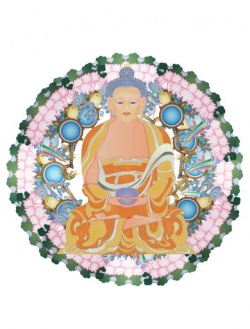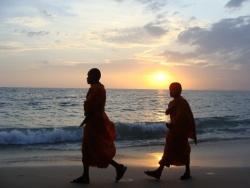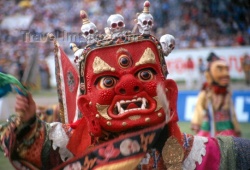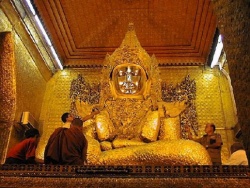Rupa
Since the material body called kalala (clear fluid) accompany the arising of the first birth-consciousness (patisandhi citta) we should understand the course of arising and ceasing of the material body throughout one's life. Hence we propose to deal with what should be known of rupa (Matter) in this chapter.
Rupa literally means that which changes its nature. The causes of change are many; they include heat and cold. In very cold climate your skin cracks, and the pigment changes; you catch cold and fall ill. In the group of purgatories called Lokantarika, the sinners drop into very cold water and are crushed to death. In hot climate your skin get inflamed and redden; you get burns and scalds; you get sunstroke. Moreover you may be bitten by mosquitoes, pests, dogs or snake; some of these bites may be fatal. Hunger and thirst may also kill you. These are examples of the changing nature of rupa.
Classes Of Rupa
Although there are 28 classes of rupa in all, we shall mention only the important 19.
The Four Fundamental Elements
Pathavi dhatu (earth element) - the element of extension, solidity.
Apo dhatu (water element) - the element of fluidity, cohesion
Tejo dhatu (fire element) - the element of heat, cold
Vayo dhatu (air element) - the element of motion support
The Five Pasada Rupa (Sensitive Parts of the Five Organs)
Cakkhupasada (sensitive part of the eye)
Sotapasada (sensitive part of the ear)
Ghanapasada (sensitive part of the nose)
Jivhapasada (sensitive part of the tongue)
Kayapasada (sensitive part of the body)
The Five Arammana (Objects Grasped Through Sense-doors)
Ruparammana (visible form)
Saddarammana (sound)
Gandharammana (smell)
Rasarammana (taste)
Photthabbarammana (touch, tangible sense)
Note:
Photthabbarammana is just pathavi, tejo and vayo; they serve as objects of temporary touch only; so it is not numbered.
The Two Sexes
(a) Itthi bahva rupa (femininity)
(b) Purisa bhava rupa (masculinity)
Seat or Basis of Consciousness
Hadaya vatthu rupa
Vitality of Matter
Jivita rupa
Essence of Nutrition
Oja rupa or Ahara
Intra-atomic Space
Akasa dhatu
Form



